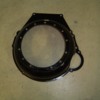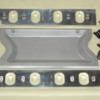I want to start out by saying that this swap requires a fair amount of fabrication and might not be suited for everybody. I am going to provide as much detail as I can for anyone else who might be considering the swap.
I also recognize that there might be some who disagree with this particular route to greater cubic inches and I respect your opinions but I also ask that you respect mine in going this direction.
My motivation for taking on this project started when my 351C short block in my Pantera turned out to be done. It was .040 over with out of round cylinders and had the deck o-ringed but was used with a standard head gasket that had blown.
My original goal was to build a nice mild 300-350 hp 351C and build a fancy stroker later after I was driving and enjoying the car. That changed when I discovered the engine to be bad.
I found a great deal on a 78 400 complete air cleaner to pan for $200. The block is cast in the Cleveland foundry and is STD bore. The machine shop I use gave me a junk block to use for mock up so I decided to park a 400 short block under my 4V heads and intake. I will be building a mild engine as originally planned... only bigger.
A lot of people might not be familiar with the 400 Ford or have been misinformed about it so here are some links to help out with a basic knowledge.
I look at the relationship between the 351C and 400 as similar to a 302 and 351W.The engines are of similar design and architecture with some interchangability.
More information is available than what is listed here but I thought this would be a good start to give everyone some familiarity with the 400. Check em out.
http://www.projectbronco.com/T...lling_the_rumors.htm
http://www.off-road.com/trucks...Detail.jsp?id=198751
http://www.fordmuscle.com/arch...02/Ford400/index.php
http://www.tmeyerinc.com/400Ford.htm
The topic has been discussed here on the PIBB previously.
Comp2 is also doing a 400 conversion and has done a lot of the ground work for this. Here are some links to previous postings on his progress.
Ford 400
http://pantera.infopop.cc/eve/...562/m/8400056672/p/1
Ford 400 Build
http://pantera.infopop.cc/eve/...562/m/3250071743/p/2
1905 Part Duex
http://pantera.infopop.cc/eve/...562/m/7990085544/p/1











